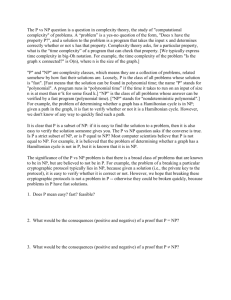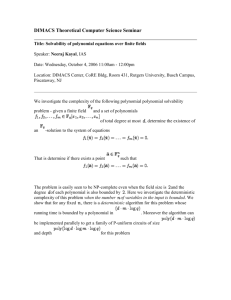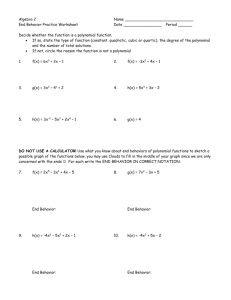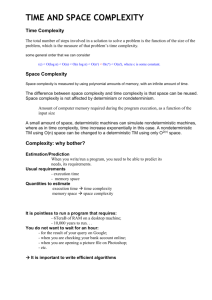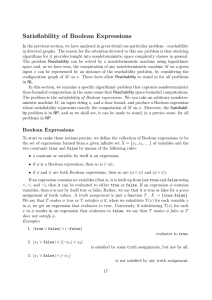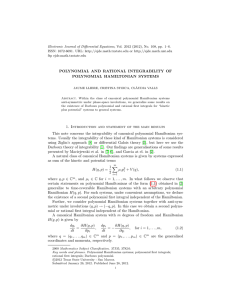optimization complexity
advertisement
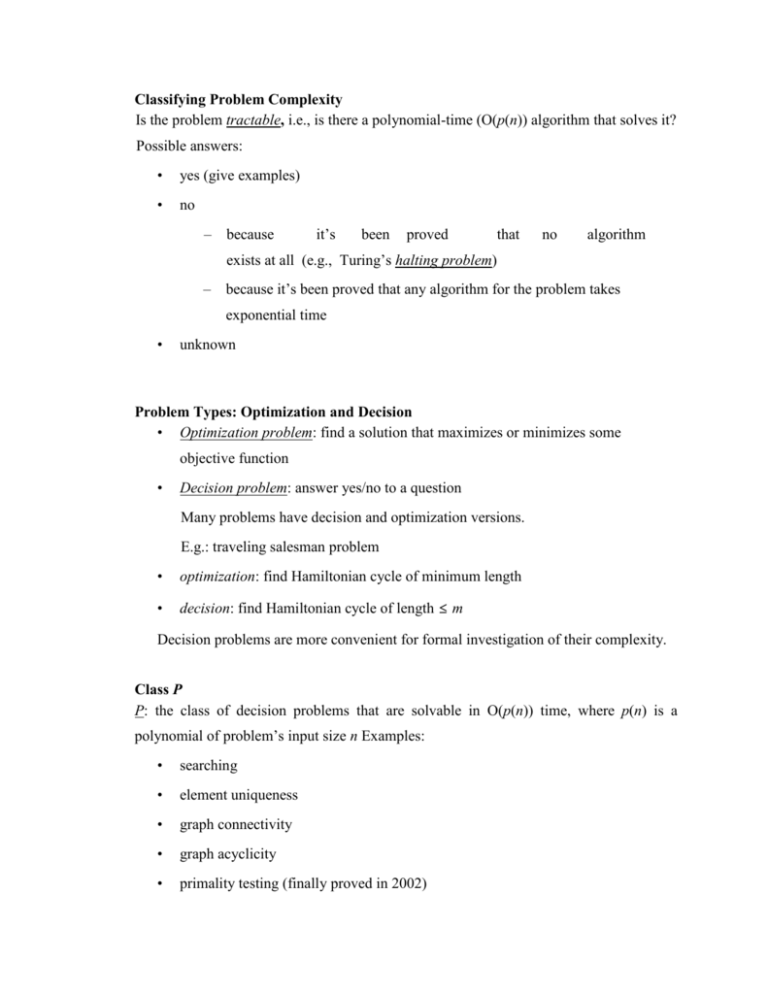
Classifying Problem Complexity Is the problem tractable, i.e., is there a polynomial-time (O(p(n)) algorithm that solves it? Possible answers: • yes (give examples) • no – because it’s been proved that no algorithm exists at all (e.g., Turing’s halting problem) – because it’s been proved that any algorithm for the problem takes exponential time • unknown Problem Types: Optimization and Decision • Optimization problem: find a solution that maximizes or minimizes some objective function • Decision problem: answer yes/no to a question Many problems have decision and optimization versions. E.g.: traveling salesman problem • optimization: find Hamiltonian cycle of minimum length • decision: find Hamiltonian cycle of length ≤ m Decision problems are more convenient for formal investigation of their complexity. Class P P: the class of decision problems that are solvable in O(p(n)) time, where p(n) is a polynomial of problem’s input size n Examples: • searching • element uniqueness • graph connectivity • graph acyclicity • primality testing (finally proved in 2002) Class NP NP (nondeterministic polynomial): class of decision problems whose proposed solutions can be verified in polynomial time = solvable by a nondeterministic polynomial algorithm A nondeterministic polynomial algorithm is an abstract two-stage procedure that: • generates a random string purported to solve the problem • checks whether this solution is correct in polynomial time By definition, it solves the problem if it’s capable of generating and verifying a solution on one of its tries Why this definition? • lead to development of the rich theory called “computational complexity” Example: CNF satisfiability Problem: Is a boolean expression in its conjunctive normal form (CNF) satisfiable, i.e., are there values of its variables that makes it true? This problem is in NP. Nondeterministic algorithm: • Guess truth assignment • Substitute the values into the CNF formula to see if it evaluates to true Example: (A | ¬B | ¬C) & (A | B) & (¬B | ¬D | E) & (¬D | ¬E) Truth assignments: ABCDE 0 0 0 0 0 . . . 1 1 1 1 1 Checking phase: O(n) What problems are in NP? • Hamiltonian circuit existence • Partition problem: Is it possible to partition a set of n integers into two disjoint subsets with the same sum? • Decision versions of TSP, knapsack problem, graph coloring, and many other combinatorial optimization problems. (Few exceptions include: MST, shortest paths) • All the problems in P can also be solved in this manner (but no guessing is necessary), so we have: P ⊆ NP • Big question: P = NP ? P = NP ? • One of the most important unsolved problems is computer science is whether or not P=NP. – If P=NP, then a ridiculous number of problems currently believed to be very difficult will turn out have efficient algorithms. – If P≠NP, then those problems definitely do not have polynomial time solutions. • Most computer scientists suspect that P ≠ NP. These suspicions are based partly on the idea of NP-completeness.
